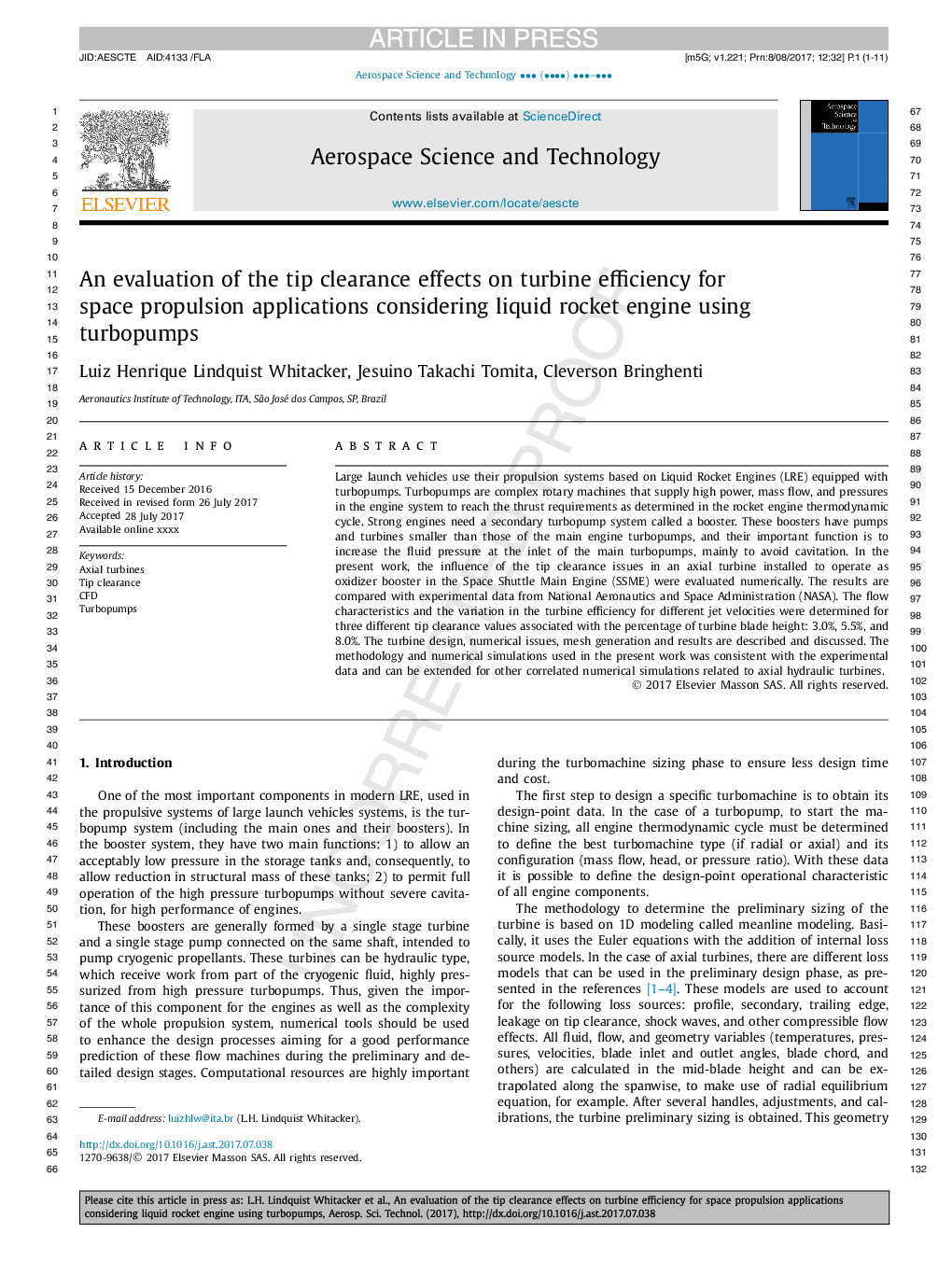| Article ID | Journal | Published Year | Pages | File Type |
|---|---|---|---|---|
| 5472588 | Aerospace Science and Technology | 2017 | 11 Pages |
Abstract
Large launch vehicles use their propulsion systems based on Liquid Rocket Engines (LRE) equipped with turbopumps. Turbopumps are complex rotary machines that supply high power, mass flow, and pressures in the engine system to reach the thrust requirements as determined in the rocket engine thermodynamic cycle. Strong engines need a secondary turbopump system called a booster. These boosters have pumps and turbines smaller than those of the main engine turbopumps, and their important function is to increase the fluid pressure at the inlet of the main turbopumps, mainly to avoid cavitation. In the present work, the influence of the tip clearance issues in an axial turbine installed to operate as oxidizer booster in the Space Shuttle Main Engine (SSME) were evaluated numerically. The results are compared with experimental data from National Aeronautics and Space Administration (NASA). The flow characteristics and the variation in the turbine efficiency for different jet velocities were determined for three different tip clearance values associated with the percentage of turbine blade height: 3.0%, 5.5%, and 8.0%. The turbine design, numerical issues, mesh generation and results are described and discussed. The methodology and numerical simulations used in the present work was consistent with the experimental data and can be extended for other correlated numerical simulations related to axial hydraulic turbines.
Keywords
Related Topics
Physical Sciences and Engineering
Engineering
Aerospace Engineering
Authors
Luiz Henrique Lindquist Whitacker, Jesuino Takachi Tomita, Cleverson Bringhenti,
